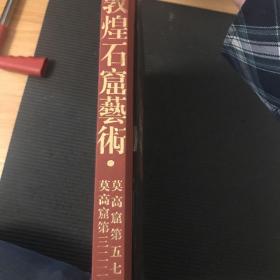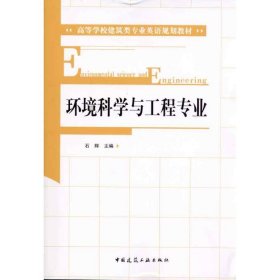
环境科学与工程专业英语(第四版)(钟理)
¥ 3.5 八五品
仅1件
山东枣庄
认证卖家担保交易快速发货售后保障
作者钟理 著
出版社化学工业出版社
出版时间2020-01
版次1
装帧平装
货号E1-2
上书时间2024-10-31
- 店主推荐
- 最新上架
商品详情
- 品相描述:八五品
图书标准信息
- 作者 钟理 著
- 出版社 化学工业出版社
- 出版时间 2020-01
- 版次 1
- ISBN 9787122356352
- 定价 49.00元
- 装帧 平装
- 开本 16开
- 纸张 胶版纸
- 页数 296页
- 字数 449千字
- 【内容简介】
-
全书共分为八个部分(PART),每个部分含若干个单元(Unit),共42个单元。每个单元由一篇课文和一篇阅读材料组成,共计84篇。其中第一部分(1~4单元)介绍环境、环境科学与工程概述和历史;第二部分(5~11单元)介绍大气化学和空气污染及其防治;第三部分(12~19单元)介绍水污染来源种类、水化学、各种污水处理技术、处理单元设备等;第四部分(20~23单元)为固体废物及处理方法;第五部分(24~27单元)介绍噪声污染与控制、全球气候变化、土壤污染与腐蚀、热污染等其他污染及控制技术;第六部分(28~35单元)为环境管理与政策,包括介绍环境影响及其评价、环境监控和分析及采样程序、环境政策与策略、环境风险评价、毒素和食品安全;第七部分(36~38单元)为生态系统与生态群落,介绍环境生物与生态圈,环境生态学,生态与生命系统与生物多样性等;第八部分(39~42单元)介绍环境可持续发展,绿色化学与技术,清洁生产,清洁生产工艺及其绿色化学过程。每篇课文均配有与课文相对应的练习,主要以主观练习题为主,包括阅读与词汇练习,英译汉与汉译英,用英语回答问题及写出课文或某一段落的小结(summary)等。为便于学生自学,本书每课配有单词和词组表,并对课文的难点作必要的注释,全书最后附有总词汇表。
本书根据《大学英语教学大纲》(理工科本科用)专业阅读部分的要求编写,是高等学校环境科学、环境工程或相关专业的教材,也可供同等英语程度环境科学工作者及环境工程师或相关领域的科技人员使用。 - 【作者简介】
-
钟理,华南理工大学,教授,主任,
2004.9-现在:华南理工大学从事化工原理本科教学、指导环保化学工艺与清洁生产的硕士和博士研究生,从事研究生专业英语教学。
2002.5-2004.8:加拿大Univ. Of Alberta客座教授,从事H2S废气处理研究。
1996.6-2002.4:华南理工大学从事化工原理本科教学、指导环保化学工艺与清洁生产的硕士和博士研究生,从事研究生专业英语教学。
1993.4-1996.5:美国Miss State Univ.博士后。从事有机废气、有机废水高级氧化处理研究。
1982.7-1993.3:华南理工大学从事化工原理本科教学、指导环保化学工艺与清洁生产的硕士研究生,从事本科专业英语教学。 - 【目录】
-
PART 1INTRODUCTION TO ENVIRONMENT AND ENVIRONMENTAL SCINECE AS WELL AS ENGINEERING1
Unit 1Text:What is Environment?1
Reading Material:A Little Environmental History5
Unit 2Text:What are Environmental Science and Engineering?7
Reading Material:Environmental Science12
Unit 3Text:Environmental Engineering13
Reading Material:Studying the Environment17
Unit 4Text:Environmental Analysis20
Reading Material:Overview of Environmental Economics24
Part 2ATMOSPHERIC CHEMISTRY AND AIR POLLUTION AS WELL AS CONTROL27
Unit 5Text:Chemistry of the Atmosphere27
Reading Material:Reactions of Atmospheric Nitrogen and its Oxides30
Unit 6Text: Acid Rain32
Reading Material:Reactions of Atmospheric Sulfur Compounds35
Unit 7Text:Introduction to Environmental Chemistry of the Atmosphere37
Reading Material:Oxidation Process in the Atmosphere43
Unit 8Text:Type and Sources of Air Pollutants[Ⅰ]45
Reading Material:Type and Sources of Air Pollutants[Ⅱ]47
Unit 9Text:Indoor Air Quality50
Reading Material:Indoor Air Pollution54
Unit 10Text:New Technologies of Air Pollution Control[Ⅰ]56
Reading Material:New Technologies of Air Pollution Control[Ⅱ]60
Unit 11Text:Effects of Air Pollution63
Reading material:Control of Air Pollution by Oxidation66
PART 3WATER AND WASTE-WATER TREATMENT69
Unit 12Text:Water Pollution and Pollutants69
Reading Material:Wastewater72
Unit 13Text:Pollution of Inland Waters and Oceans74
Reading Material:Water Supply79
Unit 14Text:Water Purification83
Reading Material:Principles of Wastewater Treatment87
Unit 15Text:Water Treatment Processes89
Reading Material:Freshwater Systems94
Unit 16Text:Biological Wastewater Treatment [Ⅰ]96
Reading Material:Biological Wastewater Treatment [Ⅱ]100
Unit 17Text:Advanced Oxidation Processes(AOPs)—Wastewater Decontamination by Solar Photo-catalysis104
Reading Material:Precipitation107
Unit 18Text:Oxidation of Wastewater[Ⅰ]110
Reading Material:Oxidation of Wastewater [Ⅱ]114
Unit 19Text: Unit Operations of Pretreatment118
Reading Material:Wastewater Treatment122
PART 4SOLID WASTES AND DISPOSAL125
Unit 20Text:Sources and Types of Solid Wastes125
Reading Material:Quantities of Wastes129
Unit 21Text:Everybody’s Problems—Hazardous Waste131
Reading Material:Municipal Solid—Waste Management135
Unit 22Text:Methods of Waste Disposal138
Reading Material:Incineration of Hazardous Waste in the U.S.A.141
Unit 23Text:Disposal of Solid Wastes144
Reading Material:Emerging Technologies in Hazardous Waste Management:An Overview148
PART 5OTHER POLLUTION AND CONTROL TECHNOLOGIES151
Unit 24Text:Noise Control[Ⅰ]151
Reading Material:Noise Control[Ⅱ]152
Unit 25Text: Global Change157
Reading Material:Global Warming161
Unit 26Text: Soil163
Reading Material: Soil Erosion166
Unit 27Text:Thermal Pollution168
Reading Material:The Major Greenhouse Gases169
PART 6ENVIRONMENTAL MANAGEMENT AND POLICY172
Unit 28Text:Summary of Environmental Impact Assessment(EIA)172
Reading Material:Introduction to Methods for Environmental Impact Assessment175
Unit 29Text:Impact of Wastewater Effluents on Water Quality of River179
Reading Material:The Aims and Objectives of Environmental Impact Assessment181
Unit 30Text:Environmental Impact Assessment of Air Quality186
Reading Material:Risk Assessment189
Unit 31Text: The Role of Environmental Monitoring in Pollution Science192
Reading Material: Environmental Chemical Processes and Chemicals195
Unit 32Text:Toxins197
Reading Material:Toxins Basics200
Unit 33Text:Sampling Sediment and Soil203
Reading Material:EMAP Overview—Objectives,Approaches,and Achievements208
Unit 34Text:Pollution Control Strategies[Ⅰ]211
Reading Material:Pollution Control Strategies[Ⅱ]214
Unit 35Text:Food Security217
Reading Material:Challenging Food Security220
PART 7THE BIOSPHERE:ECOSYSTEMS AND BIOLOGICAL COMMUNITIES223
Unit 36Text:Life and the Biosphere223
Reading Material:Nutrient Cycles for Ecosystem226
Unit 37Text:Ecology230
Reading Material:Benefits of Biodiversity234
Unit 38Text:Ecology and Life Systems236
Reading Material:The Five Major Components of an Industrial Ecosystem 240
PART 8ENVIRONMENTAL SUSTAINABLE DEVELOPMENT AND GREEN SCIENCE AND TECHNOLOGY243
Unit 39Text:The Dilemma of Sustainability243
Reading Material:The Origins of Sustainable Development247
Unit 40Text:Sustainability250
Reading Material:Newer Synthetic Methods255
Unit 41Text:Green Science and Technology and Development258
Reading Material:Green Chemistry262
Unit 42Text:Clean Technologies through Microbial Processes for Economic Benefits and Sustainability265
Reading Material:Green Development:Reformism or Radicalism?269
GLOSSARY272
点击展开
点击收起
相关推荐
— 没有更多了 —
























以下为对购买帮助不大的评价